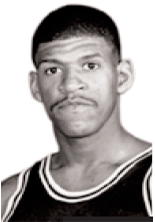He's the head coach in Seattle, the offensive coordinator in Philadelphia. He's several position coaches around the NFL. He's still coaching at the college and university level. He may never stop coaching, at this rate.
Walsh, the Hall of Fame football coach, died Monday morning after a long battle with leukemia, with which he was diagnosed in 2004. He was 75.
Walsh died but he didn't vanish from the earth. Not as long as guys like Mike Holmgren is in Seattle, Marty Mornhinweg is in Philadelphia, and others too numerous to mention are teaching the Bill Walsh offense on sandlot fields, at small colleges, and on the campuses of big-time universities across the country.
They call it the West Coast offense, and it's sort of like another California commodity, tofu; it can either taste really good or really BAD, depending on who the cook is, and what other ingredients he's using.
Steve Mariucci tried his version in Detroit, but the ingredients were ill-suited for it, and the whole thing was warmed over. Joey Harrington didn't work well with tofu.
But Holmgren -- first in Green Bay and now with the Seahawks -- found the right mix. So has Mornhinweg, believe it or not, in his role as the Eagles' play caller. His boss, Andy Reid, is another leaf on the tree whose branch leads back to the trunk that is Walsh.
Bill Walsh first started concocting his innovative offense -- which emphasized YAC (yards after catch) for the receivers -- back in the 1970s, as an assistant to Paul Brown in Cincinnati. One of his colleagues in Cincy was Sam Wyche, who went on to a fairly successful head coaching career himself. When Wyche's Bengals faced Walsh's 49ers in Super Bowl XXIII, it was a battle between mirrored images. No coincidence that that game wasn't decided until the closing minutes, when Joe Montana led one of his famous game-ending drives.

Walsh (with Joe Montana during Super Bowl XVI in Pontiac) was "an extraordinary teacher," NFL commissioner Roger Goodell said; "He taught all of us not only about football but also about life..."
Ahh, Montana. Walsh took him as a decent college QB out of Notre Dame in 1979, but not too many folks were sold on Montana as an NFL quarterback. He acquired Steve Young, who had been a scuffling QB in Tampa Bay. Both became known as among the best of their day. And both were big benificiaries of Walsh's offense, which put a premium on short drops and quick releases, and decent QB mobility. Neither, you could argue, would have become what they became under any other system or coach.
Walsh was also one of the first great cerebral coaches -- men who weren't so much Lombardi and Halas as they were bookworms and professors who broke down enemy defenses with convoluted schemes and blocking techniques.
He had humor, too. I still remember the image of Walsh, dressed as a bellhop, greeting his 49er players at a metro Detroit hotel as they arrived for Super Bowl XVI. Many of them walked right past him, nodding a greeting, as he took their bags and welcomed them to Detroit. It was his way, he said, of keeping the team loose.
"If I can show them that I can be loose and have fun," he once said in an NFL Films special, "then they can feel the same way about themselves."
The 49ers rallied in the second half to beat the Bengals at the Silverdome in 1982.
Walsh was 102-63-1 with the 49ers, plus 10-4 in the playoffs. He retired after the 1988 season and showed up a few years later at Stanford. That run wasn't all that successful, but it didn't matter; he was already by then a coaching legend.
Bill Walsh, the physical person, was the coach for the team of the 1980s. But Bill Walsh, the legacy, is still coaching teams in the 2000s. His was a "West Coast" offense, but it became universal.





























